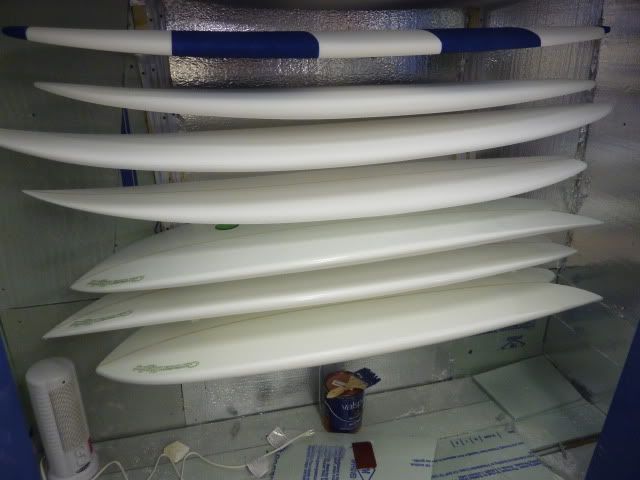I’ll respond in generalities and not compare any products on the market, use the information as you see fit. For cure rates, you have to compare apples to apples. By that I mean cure rates are also a function of the mass AND area that mass is spread over. For example, you cannot compare the cure rate of a 100 g epoxy mixed and left in a cup to the cure rate of that same 100 g mixed and then spread into a thin film over a large area. Basically, the reaction in the cup creates heat through the exotherm which increases the rate of reaction which increases the exotherm….so and so forth whereas the same amount of epoxy spread over a large area will let the exotherm heat dissipate and the “cure” will be slower. Anybody who has left a large epoxy batch in the cup can attest to this as the exotherm in sufficient mass is a self-fulfilling apocalyptic prophecy!
So if you are comparing the same mass to area ratio (such as laminating the bottom of a board with a normal amount of epoxy), then the general rule of thumb is doubling of reaction speed for every 18ºF (10°C) for most room temperature curing epoxy. So, say your epoxy cures in 2 hours at 70°F, then it should cure in 1 hour at 88°F and 30 minutes at 106°F. In fact the relationship of cure speed with temperature is non-linear (it really approximates an negative exponential… look up the Arrhenius equation if you’re sufficiently geeky). Actually, it is a little more complicated with resins because their viscosity also changes with temperature and that has its own effect on reaction rates. That is why almost all epoxies, except very specialized formulas, will not fully cure below a certain temperature…the rate of reaction slows to almost nothing due to the temperature decrease and viscosity increase. Here the general rule of thumb is that temps. must be warmer than 50-60ºF depending on the specific epoxy. BTW, letting the mix warm up some in the cup is serves exactly the same purpose (except for the ease of mixing) as microwaving the resin. Sometimes knowing how long to let the mix warm in the cup before throwing down a hot coat is the difference between glass smooth and orange peel, but that is where experience really comes into play.
This also has a bearing on post cures. At any constant temperature (this could be the case in a lamination or hotcoat where the exotherm heat is dissipated), as the reaction continues the rate slows down. In simplest terms, the two reactive molecules (resin side and hardener side) have a harder and harder time finding each other because there are less and less of them left unreacted and they are being trapped in place by the transition from liquid to solid. Some resin systems will never fully cure past the Bstage without the addition of heat more than room temp (think about pre-pregs) and even some room temp cure systems will not reach full cure at lower temperatures. Post-cure heat helps to “re-liquidfy” things and the remaining reactive molecules can now find each other easier. Ideally, post cure heat should be applied in the Bstage before the reaction has gone too far because after a certain length of time the cross link density is too high to allow much movement without a tremendous amount of heat. Nevertheless, a post cure especially at a temperature above the resin’s Tg (glass transition temperature is where the polymer goes kind of rubbery and is usually something around 130-150ºF for most room temp cure formulas) will do some good. The problem with surfboards is that high of temp can start to affect foam stability and cause out gassing. I would say most surfboard builders never reach a true post-cure temperature, but rather more accurately an elevated temperature cure which still has benefits of “loosening” things up to reach full cure faster. Bottom line is that all epoxies love some heat and it plays a much bigger role for epoxies than in polyester resin which reacts by an entirely different mechanism. Real world conditions are often not ideal…get to know how the products work under the conditions you normally work in… Charlie is right on target in this regard.
Even though I am pretty sure I never answered the original question, I hope this helps anyway. I wish I was back on Oahu to discuss this over a beer with you. I find beer is like a post cure for my brain….helps to loosen things up…and just like post curing there is such a thing as too much of a good thing.
Rob
For everysurfer: temperature cycling promotes crystallization of epoxy resins…just as you described.



